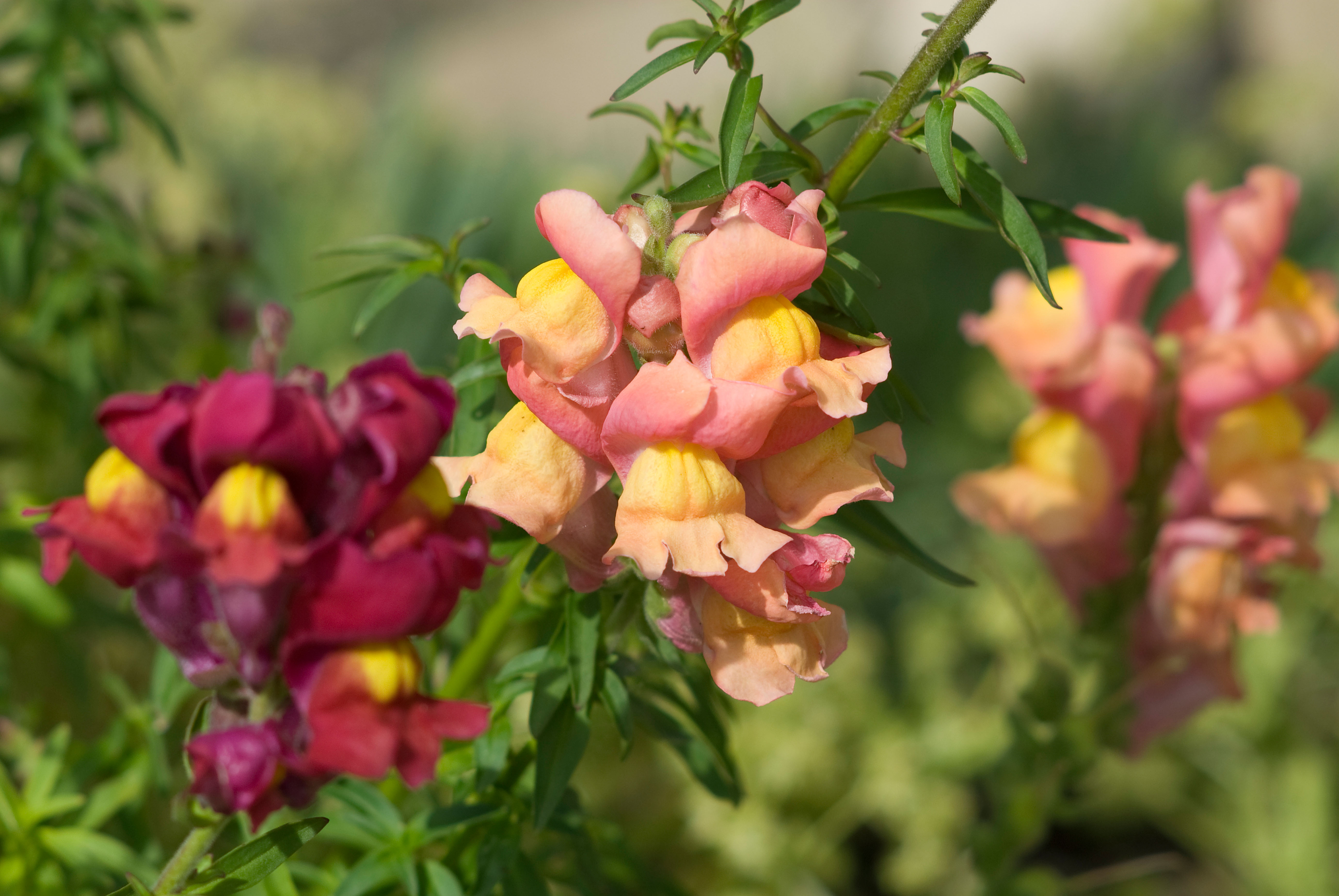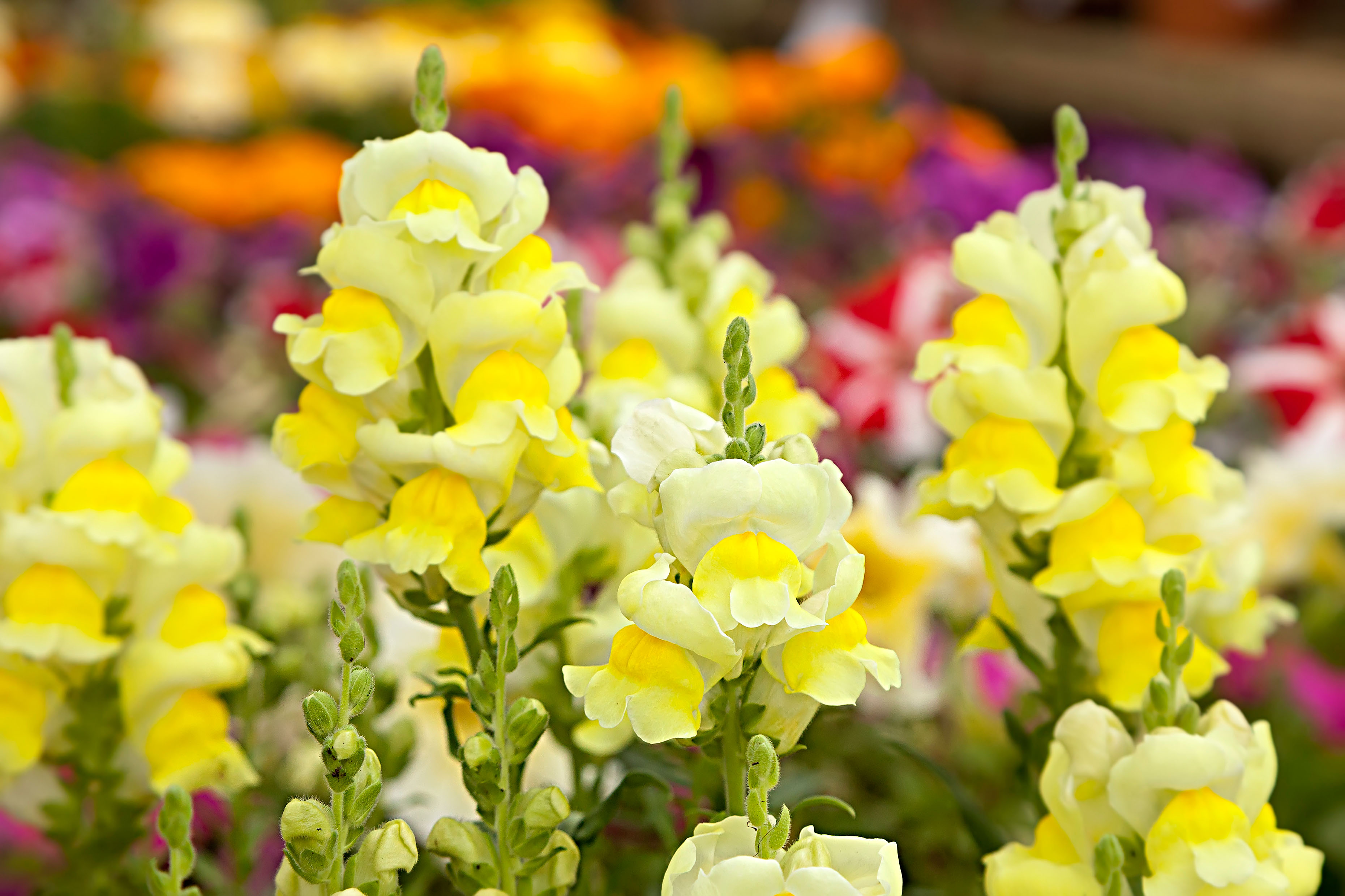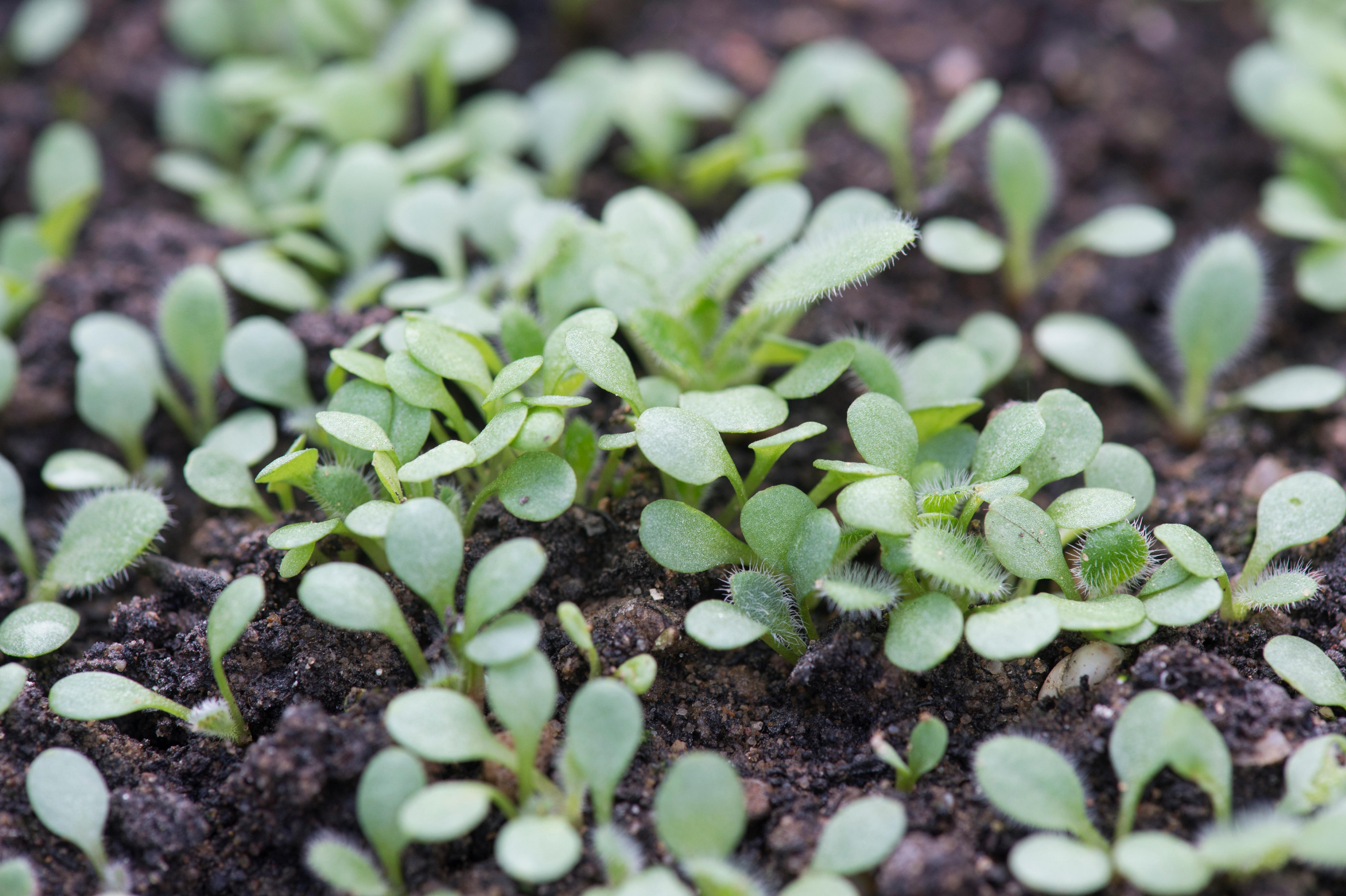How to grow snapdragons
Bring color and joy to your yard by learning how to grow snapdragons


Knowing how to grow snapdragons is an easy and satisfying way to bring vibrant color to pots and borders. Quick to raise from seed and available in a wide range of shades from pure white, bright yellow through to moody maroon and smoky pink brown there are plenty to pick and mix.
Also known as antirrhinum, dog or lion’s mouth, these distinctive hinged blooms have long been popular cottage garden plants. Prolific flowerers they will bloom happily from early summer through to late fall.
How to grow snapdragons

Snapdragons are pretty undemanding flowers, making them perfect as flower bed ideas. Either grown as annuals or perennials they love full sun and well-drained, fertile soil.
There are plenty of different varieties to choose from and the variation in scale is wide too. Dwarf snapdragons stand at just 4inches (10cm) tall while others such as the Rocket Hybrid can reach a majestic 36 inches (91cm), making a dramatic statement in the flower border. Below, you can find out the basics of growing snapdragons, how to nurture them and cut them for indoors.
How and when to sow snapdragons

Sow from seed in fall or early spring under cover – so in a covered tray on a sunny windowsill or in a greenhouse – and they should germinate within 8 to 14 days. Between 61℉ to 64℉ is the ideal temperature. Cut flower grower Lori Hernandez from Three Acre Farm in Michigan says, ‘I sow two seeds per cell. To sow them, I put the seeds in a small dish or jar, tick the end of a toothpick and use the toothpick to pick up two seeds. No, I am NOT joking! I wish I was! This is the best method for sowing tiny seeds like snapdragons and poppies.’
Cover the seeds with a small amount of soil and keep at 65-75℉ (18-25℃) to germinate.
Once big enough to handle – with one or two strong leaves – transfer each seedling into its own pot and grow outside in a sheltered spot. For fall sown seedlings only plant outside in a very sheltered spot. For those sown in spring, wait until frosts have passed before planting them out into pots and borders. The team at Jacksons Nurseries suggest: 'Gradually accustom plants to outside conditions for 2-3 weeks before planting out from April onwards. Allow 10in (25cm) between plants.'
How and when to plant out snapdragons
If you don’t fancy raising snapdragons from seed, opt for buying seedlings online or from plant nurseries instead. There may be less choice available than if you were to buy seeds but by purchasing young plants you can fast track your yard to an early summer display. Cutting garden specialist Sarah Raven says, ‘You can pinch out the growing tip to encourage the plant to bush out, but if you are going to cut them for flower arrangements this will have the same effect.’
Plant spring bought seedlings outside in pots, planters or borders once frosts have passed. Soak the plants well just before planting – for around 20 minutes is ideal – and prepare the soil by forking over and working in plenty of compost.
‘Mark out your planting positions with empty plant pots, leaving plenty of space for plants to spread around 12inches (30cm) apart,’ suggests Sarah Raven. ‘Dig holes deep and wide enough so the crown of the plant is level with the soil surface. Backfill around each plant and firm the soil gently.'
Water thoroughly once a week.
Do snapdragons come back every year?
Snapdragons can be grown as either annuals – where they flower for one season and then die off – or as perennials – where they die back down in late fall and then reappear the next spring.
Deadheading – that is removing the spent flowers – will prevent the plant from setting seed and encourage further blooms to form.
It also worth noting that the plants slow down during hot weather, producing fewer blooms but they usually pick up in cooler temperatures.
How to grow snapdragons in containers
Perfect for growing as container gardening ideas, snapdragons will put on a brilliant display either planted on their own or with other summer flowering favorites.
Opt for a large planter to provide plenty of room for the roots to establish. This will also require less watering and promote strong and healthy plants. Position the container in a sunny yet sheltered position and it will provide weeks of glorious color.

Where do snapdragons grow best?
Originating from the Mediterranean, it should be no surprise to discover that snapdragons prefer a sunny position in free draining but rich, moist soil. Keep them sheltered from frosts and out of strong winds to prevent stems, particularly when laden with blooms, from snapping.
How to grow snapdragons for cut flowers
With their striking flower-laden spires, snapdragons are ideal for growing as cut flowers to display indoors. Stems can grow as tall as 36 inches (91cm) and make a striking show grouped in a vase.
To promote strong, straight stems staking is required. Support individual plants with bamboo canes, use metal plant loops or if growing in a cutting patch use horizontal jute netting stretched taut and tied to canes or timber stakes along the edges. The plants can then grow vertically up through the netting.
When it comes to picking snapdragons, Gordon Hanks from The National Cut Flower Center recommends that the ‘picking stage varies from 30% of bottom florets open, to two to three florets showing color.’
Lori from cut flower growers Three Acre Farm, Michigan recommends ‘Madame Butterfly’, ‘Chantilly’, ‘Potomac series’ and ‘Rocket as her favorite cutting varieties and says to ‘always harvest in the cool of the day – morning or evening.’ Place stems immediately into cool water to promote long-lasting flowers.
For more information on snapdragons, see our guide on how to keep your snapdragons flowering, for brilliant blooms all summer long.
Sign up to the Homes & Gardens newsletter
Design expertise in your inbox – from inspiring decorating ideas and beautiful celebrity homes to practical gardening advice and shopping round-ups.

Journalist Jill Morgan has spent over 20 years writing and editing gardening, interior and property features. Titles she has worked on include The English Home, House Beautiful, Ideal Home, Houzz and Modern Gardens and she writes regularly for H&G as a Contributing Editor. Whilst she is a dab hand at renovation projects and DIY, she is happiest when out digging in the garden or planning a new border.
-
 'Wick away the ick' – 6 things people with clean laundry rooms always do to make this hardworking space shine
'Wick away the ick' – 6 things people with clean laundry rooms always do to make this hardworking space shineThese tips on how to clean your laundry room will banish grime
By Seraphina Di Mizzurati Published
-
 Jennifer Aniston’s bedroom is a ‘goldmine of simple sumptuousness’ – it’s 2025’s version of quiet luxury and so easy to recreate
Jennifer Aniston’s bedroom is a ‘goldmine of simple sumptuousness’ – it’s 2025’s version of quiet luxury and so easy to recreateThe actress's unique space features James Mont-designed lamps and a raised bed inside a walnut plinth – but you can recreate its understated sophistication
By Megan Slack Published